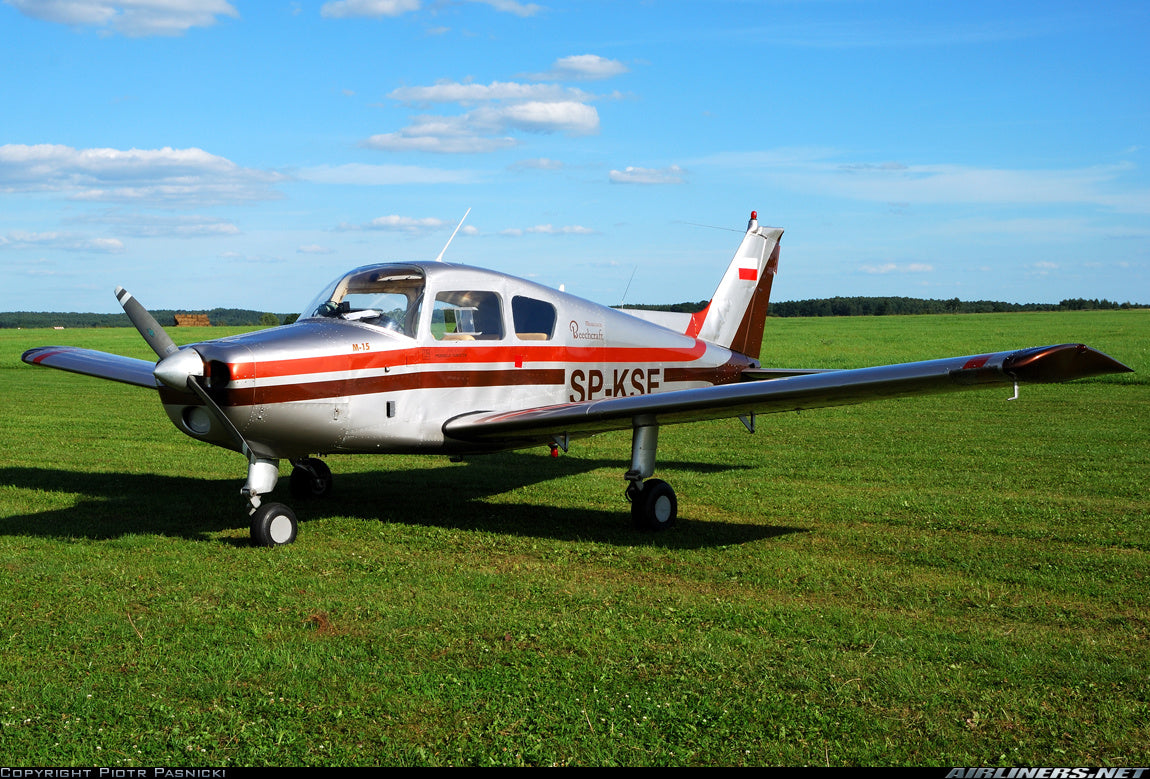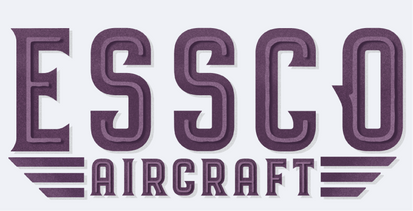
Number 33 of 100 in 100, the Beechcraft Musketeer! 🛩️🧑✈️
Conceptualization:
The initial model was introduced under the “Musketeer” name in 1963. During the 60s, there was an increasing demand for affordable, reliable, and easy-to-fly aircraft, particularly for training and personal use. Beechcraft, known for producing high-performance aircraft, aimed to create a model that could compete with similar aircraft like the Cessna 172 and Piper Cherokee. The design philosophy focused on simplicity, durability, and affordability, making it ideal for GA pilots and flight schools. The Musketeer was intended to fulfill a need in the market by offering a reliable and cost-effective solution that maintained the quality and reputation associated with Beechcraft.
Original Design:
The original Beechcraft Musketeer, introduced in 1963, featured an all-metal construction, low-wing configuration, and tricycle landing gear, which contributed to its durability and ease of use. These design elements made the aircraft ideal for flight training and personal use. The low-wing design enhanced visibility and stability, while the tricycle gear simplified ground handling, especially for student pilots. The aircraft's spacious cabin could accommodate up to four people, and its simple, reliable systems reduced maintenance costs. The Musketeer was powered by a dependable Lycoming O-320 engine, delivering 160 horsepower, which provided a balance of performance and fuel efficiency. The overall design emphasized ease of operation and low operating costs, making it an attractive option for a broad range of pilots.

Photo Credit: airliners.net - John Myers
Principal Designer:
The Musketeer was developed by a team of engineers at Beechcraft, drawing on the company's extensive experience in general aviation. Specific people are not directly credited, but the aircraft’s design reflects Beechcraft's broader philosophy of producing high-quality, pilot-friendly aircraft. The Musketeer benefited from the team's expertise in creating aircraft that were not only reliable but also economical and easy to maintain, essential qualities for its intended market of flight schools and private pilots.
Production Run:
The Beechcraft Musketeer was produced from 1963 until 1983, with a total 4,366 units manufactured. Throughout its 20-year production span, the aircraft was offered in several variants, each aimed at addressing different market needs. The production volume peaked in the 1960s and early 1970s, particularly with the introduction of the popular C23 Sundowner model. Over time, production numbers began to decline due to increasing competition and changing market demands. Despite the eventual end of production, the Musketeer remains a well-regarded aircraft, with many units still in operation today, particularly in training and personal aviation roles.

Photo Credit: airliners.net - Tamas Kolos-Lakatos
Evolution:
The Beechcraft Musketeer evolved significantly over its production run, with multiple variants introduced to enhance performance and meet the needs of different pilots. The original Model 23 was followed by models like the A23-24 Super III, which featured a more powerful engine, and the C23 Sundowner, which became the most popular variant due to its improved comfort and versatility. These changes reflected Beechcraft’s efforts to keep the aircraft competitive, balancing affordability with enhanced features. The Musketeer’s evolution ensured it remained relevant in a market that increasingly demanded more from lighter aircraft, whether for training or personal use.
Specifications:
Beechcraft Musketeer Specifications Sheet
General Characteristics:
- Crew: 1 (pilot)
- Capacity: 3 passengers
- Length: 25 ft 10 in (7.87 m)
- Wingspan: 32 ft 9 in (9.98 m)
- Height: 8 ft 3 in (2.51 m)
- Wing Area: 151 sq ft (14.02 m²)
- Empty Weight: 1,505 lbs (683 kg)
- Gross Weight: 2,350 lbs (1,066 kg)
- Fuel Capacity: 57 US gallons (216 liters)
- Powerplant: 1 × Lycoming O-320-D2B, 160 hp (119 kW)
- Propeller: 2-blade fixed-pitch propeller
Performance:
- Maximum Speed: 126 knots (145 mph, 233 km/h)
- Cruise Speed: 118 knots (136 mph, 218 km/h)
- Stall Speed: 49 knots (56 mph, 91 km/h) with flaps down
- Range: 500 nautical miles (575 miles, 926 km)
- Service Ceiling: 13,000 ft (3,962 m)
- Rate of Climb: 660 ft/min (3.35 m/s)
- Takeoff Distance: 910 ft (277 m) to clear a 50 ft obstacle
- Landing Distance: 770 ft (235 m) to clear a 50 ft obstacle
Avionics:
- Standard Avionics Package: Basic VFR (Visual Flight Rules) instruments
- Optional Avionics: Upgraded avionics for IFR (Instrument Flight Rules) capability, including radios, transponder, and basic navigation systems.
Interior:
- Seating Configuration: 2+2 seating arrangement, with front bucket seats for pilot and co-pilot, and a bench seat for rear passengers.
- Cabin Width: 42 in (1.07 m)
- Cabin Height: 48 in (1.22 m)
- Cabin Features: Basic upholstery with options for upgraded interiors, large windows for enhanced visibility, overhead ventilation, and a simple but functional instrument panel.
Landing Gear:
- Type: Tricycle, fixed gear
- Nosewheel: Steerable nosewheel with oleo-pneumatic strut
- Main Gear: Tubular steel legs with oleo-pneumatic struts for shock absorption
Safety Features:
- Structure: All-metal airframe, known for durability and crashworthiness
- Stabilator: Full-flying stabilator for improved pitch control, especially at lower speeds
- Fuel System: Gravity-fed fuel system with dual tanks
- Lighting: Standard navigation lights, landing lights, and strobes
Operational Characteristics:
- Ease of Maintenance: Simple systems with easy access panels for routine maintenance tasks
- Durability: Rugged construction suited for high-utilization environments like flight schools
- Operating Costs: Relatively low operating costs due to fixed-pitch propeller and reliable Lycoming engine
Comparison with Other Aircraft in its Class:
Cessna 172 Skyhawk:
- Powerplant: 1 × Lycoming IO-360-L2A, 180 hp
- Cruise Speed: 122 knots (140 mph, 226 km/h)
- Range: 640 nautical miles (736 miles, 1,185 km)
- Service Ceiling: 14,000 ft (4,267 m)
- Takeoff Distance: 960 ft (293 m) to clear a 50 ft obstacle
- Landing Distance: 575 ft (175 m) to clear a 50 ft obstacle
Comparison: The Cessna 172 has slightly better range and service ceiling, and generally offers more modern avionics and amenities in later models. However, the Musketeer is comparable in terms of speed, takeoff distance, and ease of maintenance, often at a lower cost.
Piper PA-28 Cherokee:
- Powerplant: 1 × Lycoming O-360-A4A, 180 hp
- Cruise Speed: 117 knots (135 mph, 217 km/h)
- Range: 520 nautical miles (598 miles, 963 km)
- Service Ceiling: 14,100 ft (4,298 m)
- Takeoff Distance: 1,250 ft (381 m) to clear a 50 ft obstacle
- Landing Distance: 650 ft (198 m) to clear a 50 ft obstacle
Comparison: The Piper PA-28 Cherokee has a similar cruise speed and range to the Musketeer, but with a slightly higher service ceiling and better takeoff performance in some variants. The Musketeer, however, is often praised for its larger cabin and better visibility.
Grumman American AA-5 Traveler:
- Powerplant: 1 × Lycoming O-320-E2G, 160 hp
- Cruise Speed: 125 knots (144 mph, 231 km/h)
- Range: 565 nautical miles (650 miles, 1,046 km)
- Service Ceiling: 12,500 ft (3,810 m)
- Takeoff Distance: 1,075 ft (328 m) to clear a 50 ft obstacle
- Landing Distance: 775 ft (236 m) to clear a 50 ft obstacle
Comparison: The AA-5 Traveler is similar to the Musketeer in power and performance but tends to offer a sportier flying experience due to its lighter weight and more responsive controls. The Musketeer’s construction, on the other hand, is more robust, favoring durability over agility.

Photo Credit: airliners.net - Brian Nicholas
Performance:
Beechcraft Musketeer Performance Envelope
V-Speeds:
- V_NE (Never Exceed Speed): 154 knots (177 mph, 285 km/h)
- V_NO (Maximum Structural Cruising Speed): 125 knots (144 mph, 232 km/h)
- V_A (Maneuvering Speed): 112 knots (129 mph, 207 km/h) at maximum gross weight
- V_FE (Maximum Flap Extended Speed): 100 knots (115 mph, 185 km/h)
- V_S1 (Stall Speed Clean, No Flaps): 55 knots (63 mph, 102 km/h)
- V_SO (Stall Speed in Landing Configuration): 49 knots (56 mph, 91 km/h)
- V_X (Best Angle of Climb Speed): 66 knots (76 mph, 122 km/h)
- V_Y (Best Rate of Climb Speed): 75 knots (86 mph, 139 km/h)
G-Load Limitations:
- Positive Load Factor:
- Flaps Up: +3.8g
- Flaps Down: +2.0g
- Negative Load Factor: -1.52g
Approved Maneuvers:
- Normal Category Operations: The Beechcraft Musketeer is certified in the Normal Category, meaning it is primarily designed for non-aerobatic operations. Approved maneuvers include:
- Steep Turns: Up to 60 degrees bank
- Chandelles
- Lazy Eights
- Stalls: Power-on and power-off
- Emergency Descents
- Prohibited Maneuvers:
- Spins: Intentional spins are not approved
- Aerobatics: The aircraft is not approved for aerobatic maneuvers beyond those specified for the Normal Category.
Safety Record:
The Beechcraft Musketeer has a solid safety record, particularly for an aircraft heavily used in flight training. Common safety concerns typically stem from issues such as fuel management errors, maintenance oversights, and pilot error rather than inherent design flaws. The Musketeer’s stable handling and forgiving flight characteristics make it a reliable training platform, though incidents related to hard landings or improper stall recovery have been reported. Compared to similar aircraft like the Cessna 172 and Piper Cherokee, the Musketeer’s safety record is comparable, with no significant deviations. Overall, the aircraft’s design contributes to its reputation as a safe and dependable choice for both training and personal flying.
Acquisition Cost:
When first introduced in 1963, the Beechcraft Musketeer had an acquisition cost of approximately $13,300, making it an affordable option in the general aviation market. Today, well-maintained Musketeers can be found in the used aircraft market with prices ranging from $30,000 to $55,000, depending on the model year, condition, and upgrades. This appreciation reflects the aircraft's continued demand among private pilots and flight schools, who value its reliability, ease of maintenance, and solid performance. Compared to similar aircraft, the Musketeer’s current market value is competitive, particularly given its strong build quality and reputation for durability.

Photo Credit: airliners.net - Chase Dallas
Bibliography:
Aircraft Owners and Pilots Association (AOPA)
FAA Aviation Safety Information
National Transportation Safety Board (NTSB)
Essco Links:
